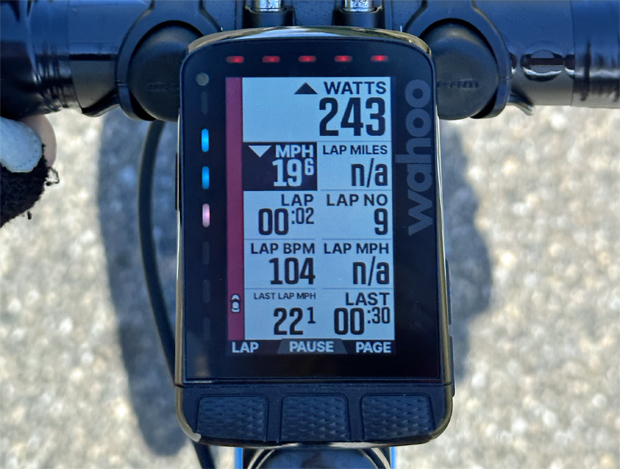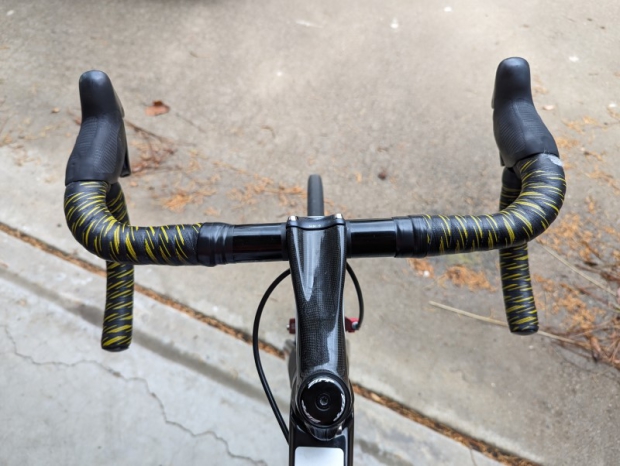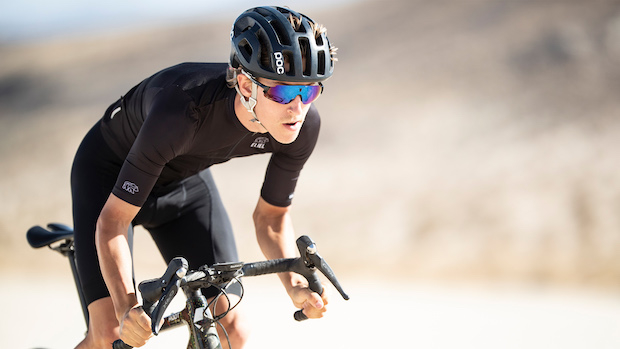We Often Run Faster Off Tri Training
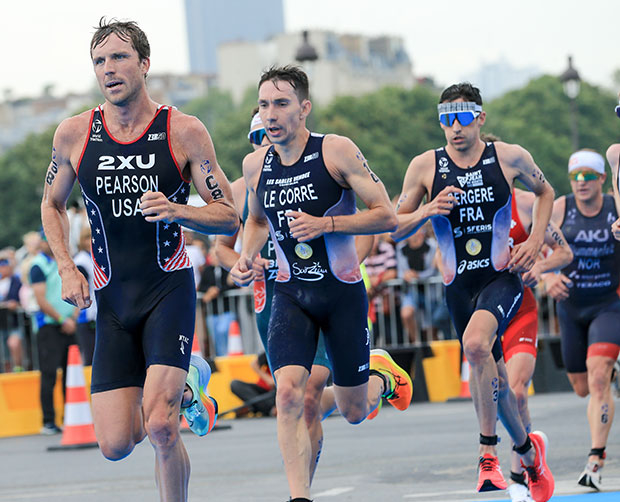
Elite triathletes are bigger than elite runners. This is especially the case at longer distances. World class IRONMAN triathletes are a lot larger than world class marathoners.
I noticed this decades ago, because for a dozen years many or most of the top triathletes used wetsuits I made so I had some general (within a range) insight into their morphologies. The Big Four (Mark Allen, Dave Scott, Scott Tinley and Scott Molina) all wore the same size, even though we made at least a dozen sizes of wetsuits. That particular size fit men who were, plus or minus, 5'11" or 6 feet tall, and who weighed in the mid-150s to low-160s in pounds. If there was a prototypical triathlon morphology for men, that appeared to be it. That observation has stuck over time.
Yes there were outliers like Greg Welch and Christian Bustos, who were 15 or 20 pounds lighter, but most top male triathletes of that day including Rob Barel, Ken Glah, Wolfgang Dittrich, Ray Browning, Pauli Kiuru, Simon Lessing, Spencer Smith, Peter Reid, Jurgen Zack and on and on generally hovered around what in boxing would be the "middleweight" class and for the weights I'm referencing below I'm relying on results of Google queries of athletes' heights and weights. Today’s most elite runners at the 10k level up to the marathon are routinely 30 or more pounds lighter than listed weights of top IRONMAN triathletes (and many top Olympic distance men as well).
In pure run there are outliers as well, like Jakob Ingebrigtsen who is built like a triathlete at 6’1” and 163lb. He also is more of a middle distance runner who stretches to 5000 meters. Still, look at him in a Diamond League or WC 5000. He’s a giant among Lilliputians.
Same with women. Back in the 80s and 90s our most popular wetsuit size for elite women was "women’s medium" and if you look at the top triathletes from Erin Baker to Karen Smyers, Michellie Jones, Siri Lindley, Barb Lindquist up to Gwen Jorgenson, Flora Duffy, Lucy Charles-Barclay (pictured below) and Daniela Ryf today it’s very common for top women in triathlon to be of larger stature than typical of elite runners. Google queries about morphologies show many elite triathletes range between 126 to 133 pounds in weight (because they're taller and carry more muscle). See how this compares to reported weights of world class runners. Faith Kipyegon is 5’2” and 93lb. Letesenbet Gidey, Gudaf Tsegay, Sifan Hassan are all taller and heavier than her and, like Jakob Ingebrigtsen, are middle distance to 5000 meters, sometimes to 10k. Even they are all under 110lb. Women’s marathon? Mary Jepkosgei Keitany is a 93lb heavyweight and the other top women marathoners are, as in the 5k and 10k, 110lb or lighter. While there are exceptions to the rule, this is the rule.
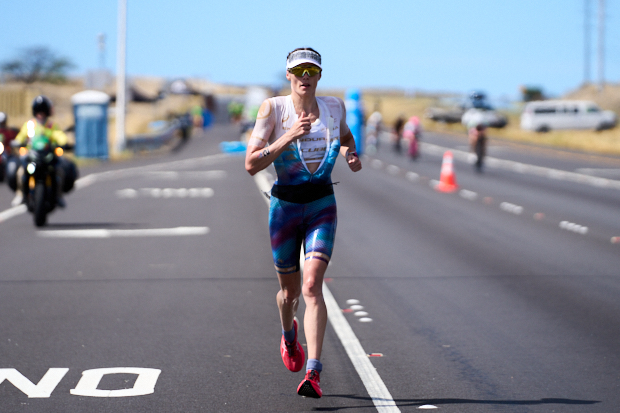
Here is why I bring this up. Former elite runner and soon to be 2-time U.S. Olympic triathlete Morgan Pearson appears to be that prototypical triathlete, roughly comparable in size (my estimate) to Scott Molina in the old days and to Alistaire Brownlee today. Morgan Pearson was making the race at the USATF Cross Country Nationals last week, 8k into the 10k race. He was at that point in the race in the lead and trying to drop Cooper Teare, who is currently America’s best cross country runner. Pearson would fade to 4th, earning a spot on the U.S. Worlds team, and his “fade” at the end still kept him only 9 seconds behind eventual winner Teare. It is my contention that he runs this fast not in spite of being a triathlete, but in a certain way because of it. Here is why what (I suspect) works for Morgan Pearson also works for you.
Morgan Pearson does not really train for his winter run exploits. He maintains his swim, bike and run training and just does what any good triathlete should do in the off-season: He rests immediately post-season and upon his return to training shores up a weakness. (During the winter he's more likely to train his swim than his run). I note this as I recall that every second winter for the past few years he’s done something in pure run that he never quite did as a pure runner, prior to his becoming a full triathlete in 2018. Two winters ago he finished 8th in the U.S. Half Marathon Championships, running 1:01:47. Two winters before that he won the U.S. Club Cross Country Nationals.
But while those results were eyebrow raising the National Championships last week was not the Club race. This race was Big Time. Cooper Teare is a 3:50 miler and a 13:06 5k runner on the track. Pearson finished just ahead of the Bor brothers, Kenyan expatriates who are now America’s best steeplechasers (the track specialty perhaps most akin to cross country). Predictably, every time Morgan Pearson does something like this the threads on LetsRun say, “He should give up triathlon and become a pure runner!” and the assumption is that he will be faster yet if he does so. I’m not convinced this is true and here’s why.
Junk Miles
For about a decade we’ve been hearing this phrase and the definition is “miles without portfolio” I guess. Miles to which you can’t ascribe a specific use or duty. But I think this gets misinterpreted as easy miles. Slow miles. Which, if you’re a world class runner you run a lot of and they’re not junk. They serve a purpose. Volume. We need quality in our training but not all our workouts should be quality (high heartrate). If you ask a top run coach the most frequent mistake aspiring world class runners make is, “The hard workouts are too easy and the easy workouts are too hard.” Unless you do the easy workouts easy you can’t do the hard workouts hard! But you can’t have only the hard workouts, and it’s that way whether you’re a pure swimmer, biker or runner. In fact, if you had to drop something there's an argument that you keep the volume and sacrifice the quality workouts, even if the volume running is slow. And if you do choose to get your "volume running miles" done in the pool and on the bike your regimen still should include that long run. Even if it's slow.
To be an expert anything you have to put in Gladwell’s Hours and that’s the case in running. That’s a lot of volume. When you translate your training to hours, it’s hard to spend that many hours afoot. If you run 120 miles a week even if your average pace is something very pedestrian, like 6:30 pace, that’s 13 hours a week. That’s not a lot, really. And that kind of running mileage is a problem for larger athletes.
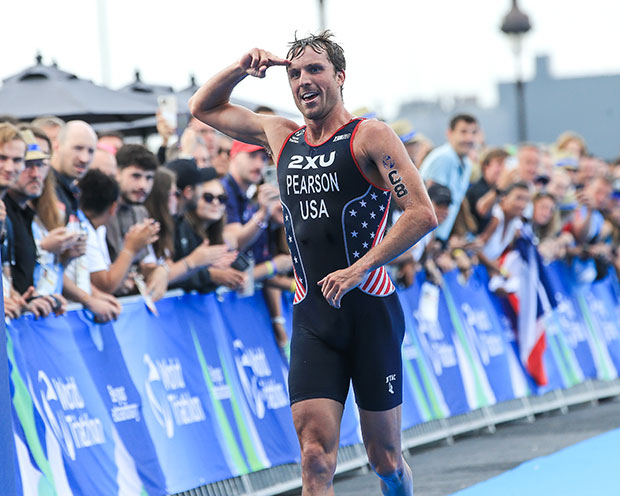
Let us assume Gwen Jorgenson swam 20,000 yards a week, and I think that’s about right or if not it’s low. That’s at least 5 hours a week in the pool. Two hundred fifty miles a week on the bike is another 14 hours, if you ride the whole thing at an 18mph average. Then imagine 6 hours a week running. That’s a 25 hour week and I don’t think that’s a bad assumption, at least in terms of hours at an endurance heart rate (110bpm or higher). If Gwen ran that 130 miles per week, as the top Kenyans and Ethiopians do, she’s probably tearing her legs up; Paula Radcliffe is the only female in my memory who reached world class marathon success with a morphology roughly equivalent to Gwen’s.
This is why I think Gwen might’ve been her best running self as a triathlete, even as every pure runner would just denounce that as even a possibility. But that kind of paradigm is at least an explanation for Lukas Verzbicas, demolishing the high school national 2 mile record (running 8:29) while training to win the world junior triathlon championship. Only to flame out in months as a “pure runner” at U of Oregon, under a coach who could not fathom what I’m writing now.
It’s not “Cross Training”
This isn’t a case of runners cross-training. Jorgenson and Pearson – and you and I – have acquired the skill, technique and fitness to ride like cyclists and swim like swimmers. We all get our full measure of aerobic and muscular work swimming and cycling. We have the luxury of “running” the volume mileage on the bike and in the pool. Pearson is putting in more aerobic work than a 130 mile-per-week runner, with less wear and tear. Were he to try to run that mileage it's my guess (and only a guess) he might be playing at a disadvantage to his lightweight contemporaries.
And this is why you might be pure running faster now than you think you should, if you’re a 15- or 20-mile per week (or a little more) runner buried inside a triathlete who’s also riding 150 miles a week and swimming 7,500 yards a week (pretty healthy age group totals). If that’s you, you’re putting in 12 to 14 hours of work with that kind of mileage and you’d have to run (my estimate) 75 miles a week to get the same training benefit if all you did was run. But you and I know you’d break down if you stopped everything else to run that 75 a week.
It’s a Running Thing
While triathletes occasionally cross over to pure cycling with success (women more often but with one obvious man who made good), what I'm writing about is a run-only thing. Volume is better achieved in the sport in which you’re racing, all things equal. You can do a lot of swim and bike volume without injury. According to my well-worn, dog-eared equivalency chart it’s not terribly hard to ride 500 miles a week, or swim 50,000 meters a week, if you’re a cyclist or a swimmer. Those are roughly equivalent to each other and to 125 miles a week of running. This, you can’t do if you’re too big or if you have structural weaknesses and it doesn’t matter how good of a runner you are. It’s not about the engine. It’s about the chassis.
Further, just because it’s possible to run 125 miles a week doesn’t mean it isn’t breaking you down, and it doesn’t mean it isn’t taking so much out of you that your quality sessions aren’t compromised. So…
Here’s one thing I’ve learned over 40 years in this or any business: If you keep doing what you’re doing you’ll keep getting what you’re getting. I usually trot that phrase out when something needs to change. But I just think there’s a reason male and female triathletes –elite and age group – run faster than you think they should based on the mileage they run. Triathlon or something like it turns out to be a great recipe for pure footspeed in pure run races. My counsel: Be slow to abruptly change a recipe that's brought unexpected success.
PHOTOS: Those of Morgan Pearson were taken at the 2023 World Triathlon Olympic Games Test Event in Paris where he qualified for the 2024 Olympics. They appear here courtesy of World Triathlon.


